General Hair Care
First and foremost, black hair should be combed out (most styles) and wrapped at night. Memories from the jerri curl days, a style that required an abundance of hair oil, often cause women to forgo moisturizing their hair for fear of it becoming too greasy. It is important to keep your hair from drying out by placing a dime size amount of moisturizer on it every 3 to 4 days.
Washing black hair in the evening can be a daunty task, especially if the particular hair style requires blow drying and straightening. Regardless of the hair style, black hair should be washed or cleaned every two to three weeks.
What type of scarf to use
Silk scarves are said to keep moisture and oil in the hair, while cotton scarves take the oil out and make black hair dry. However, despite these urban myths, there is not much difference between the two. Many hairdressers believe cotton scarves absorb extra oil that could cause the scalp to itch. Many women contend that cotton scarves tend to stay on better during the night.
Straightened Hair
When wrapping straightened hair, take a brush with firm bristles and brush the hair away from the scalp and around the head, forming a beehive shape. Continue to brush around the head until all of the hair is lying against the head. Once your hair is wrapped, gently place the scarf on your head.
In the morning, the shape of your head will have given your hair a light shaping-in toward the face. You can wear you hair like this or put in rollers and keep them in while you dress. Take them out before leaving, and you will have a light curl at the ends.
Braids
Braids provide a low-maintenance hairstyle; however, there are some key steps you should take before sleeping. To ensure that the edges of your hair don't stand out, in the evening place a non-flaky, moisturizing gel on the edges before tying hair up.
If your scalp is dry, lightly spray a hair moisturizer on your braids.
If your braids are long, tie the scarf around the nape of your neck and then over the braids to keep them from moving about during the night and becoming frizzy.
Extensions
Extensions and weaves last longer when not overhandled. At night, be sure to gently untangle hair. It is important not to pull on the hair or this will loosen the tracks, the material that attaches the extension to your natural hair.
Add moisturizer to the scalp if you have a weave, otherwise your natural hair could become brittle.
Natural Styles
If you wear your hair naturally, be sure to twist or braid your hair in the evening. Twisting and braiding will give your hair body and tighten your natural curls. Although many natural-hair wearers do not wear a scarf, it is important to protect your hair from frizzing from the friction against a pillow or cover during sleep.
Like all other hairstyles, moisturizing your hair with a natural oil product is important. If you have dreadlocks, you can use hair wax to lock the hair in place. Also, twist the base of the dreadlock to incorporate new growth.
Ponytails
Sleeping with a ponytail can cause your hair to break off at the edges. The shaft, the hair above the skin, is already in the first stages of dying, which is why it is easier to break off an end of a hair strand than pull a strand from the scalp. Any tension speeds up the process of hair loss. Pony tails pull on the shaft of hair around the edges. To help maintain long hair, loose braids are better than using a ponytail to put hair up at night.
Hair Rollers
Placing heat on black hair every day can cause breakage. Hair rollers placed in the hair in the evening can create tight curls that last throughout the day.
Sleeping in hair rollers may be uncomfortable. The best way to handle this is to use as few rollers as possible. One roller for every quarter of the scalp should be enough. Rollers with cushions tend to be more comfortable than completely plastic rollers.
If you prefer loose curls, once you awake in the morning take the rollers out and wrap your hair using your head as a mold. Cover your hair with a scarf and take down just before leaving the house.
Children's Hair
Children's hair generally grows faster as the body is producing more growth hormones. Natural hairstyles are best for children. Braids can provide convenience, but if they are too tight it can cause early hair loss. Perms and other chemical treatments are not recommended for children. Heating processes to straighten hair should be used sparingly.
Wearing a scarf may be uncomfortable for younger children, however children 10 and over should wear a scarf to sleep.
Related Articles
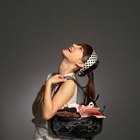
How to Keep Your Drawstring Ponytails ...

How to Do an at Home Wash & Set Without ...

How to Care for Fine Hair That Tangles ...

How Often Should Black Women Moisturize ...

Tips on Reducing Flyaway Hair

How to Preserve Curls Overnight
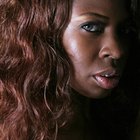
Directions for Wrapping Black Hair With ...

How to Prevent Hair From Flattening ...

How to Care for Braided and Frizzy Hair ...
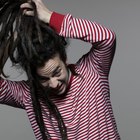
How Should I Moisturize My Dreads?

Tips to Keep Your Hair Not Knotty at ...

Dreadlocks & Outdoor Activities

How to Take Care of a Wet & Wavy Weave
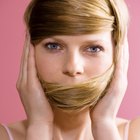
How to Saran Wrap or Doobie Wrap for ...

How to Do Pretty Hair for a 13-Year-Old ...

What Is the Proper Way to Wear a Hair ...
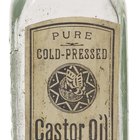
Castor Oil for the Scalp at a Braid ...
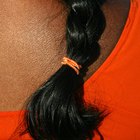
How to Make Hair Extensions Wavy
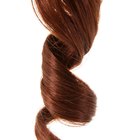
How to Make a Human Hair Weave Soft ...

How to Get Elmer's Glue Out of Hair
Writer Bio
Lanette Jimerson is an educator with 13 years of experience. She has taught in K-12 as well as post-secondary settings. Jimerson earned a Master of Arts in education from the University of California, Berkeley and is currently earning her Ph.D. in language, literacy, society and culture from the same institution.